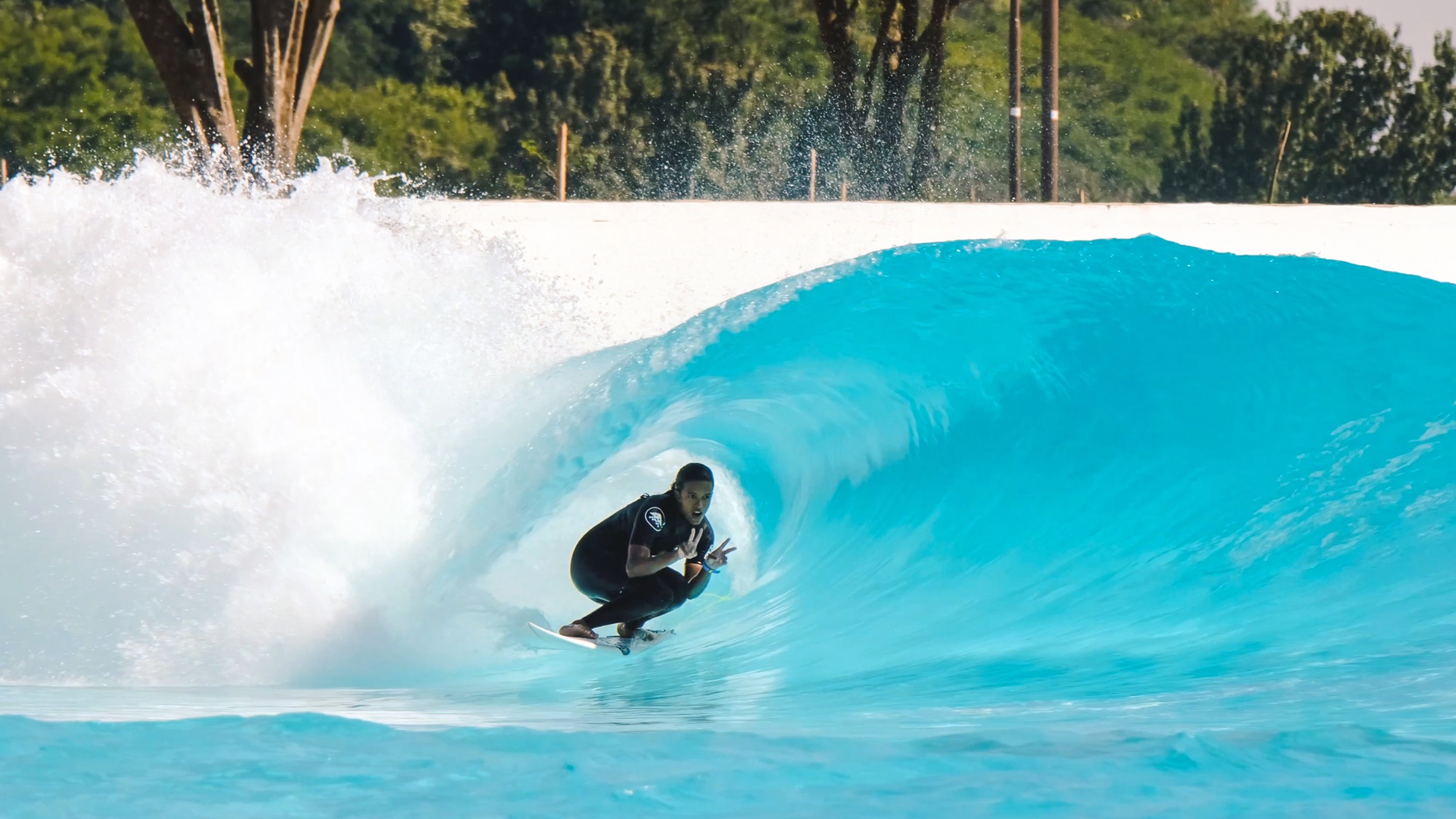How much value does a wave pool add to a development? Here’s one example

The increase in coastal property values along the Southern California shoreline and its many world-famous surf breaks is staggering with one report citing the average close-to-shore dwelling at $10.5 million. But coastal property is limited. So what do you do? Build a beach.
Phase one of the Praia Da Grama project was completed relatively quickly since its announcement in 2019. The development’s hub turned on the wave machine on July 1, 2021 and business has been brisk ever since.
When viewed solely through social media, it would seem the main effect of the wave pool has been to confirm Brazil’s place as a surfing powerhouse with CT and QS big-names taking guest dips in the transparent blue pool. But airs aren’t the only thing being boosted in São Paulo – the new surf spot has dramatically increased adjacent property values.
According to a recent Wavegarden press release, the land prices in the development rose from US$60 per m2 to US$220 per m2 just shortly after the announcement of the new surf spot. The wave technology company further added that in the next 18 months, land values continued to increase, recently hitting US$500 per m2.
Pre-opening promotion clip shows the idyllic life at Praia da Grama. Replace the computer-designed humans with real humans, and this is pretty much the scene going down at the Brazilian wave pool.
True, the developer shelled out millions for all the planing, licensing, construction and more to bring the dream to life, but the increase in value is remarkable. Developer Oscar Segall said his company KSM saw 500 client reservations when the property allotments were announced.
“After the success we had with phase 3 of the project, we envision the continuation of the partnership with KSM as Wavegarden’s representatives in the country (Brazil),” said Oscar. “Because we realized that the technology adds value to each square meter and generates liquidity, so that’s how we position ourselves in the market with real estate projects.”
Praia da Grama was designed to appeal beyond surfers. For this reason, a beach environment was recreated with sand, waves, “natural pools”, beach volleyball and beach tennis courts, as well as a swimming pool with 25-meter lanes. The company says that practically everything that is done on a beach on the coast is possible here at Praia da Grama.
“It makes me really happy to see families spread out along the beach and in the water, enjoying the waves and enjoying their time together,” added Oscar. “This is where they always gather.”
JHSF is a Brazil-based holding company active in the real estate industry. The Company is involved in the development, purchase and sale, as well as lease of residential and commercial properties. They recently licensed two PerfectSwell wave tanks in the state of São Paulo.
“JHSF is constantly innovating its real estate developments and the importance of surfing to Brazil cannot be overstated.” said Thiago Alonso, CEO of JHSF. “We intend to launch two projects with surf facilities over the coming quarters, resulting in greater waves for our clients as we populate the country with wave pools.”
As wave pool projects dot the inland surf landscape, we are seeing announcements for more private developments with wave tanks at their center. Roughly two dozen projects among the 100-plus listed on our Surf Planner fall into the private development category. Stand-alone surf park models like Urbnsurf, The Wave and Waco continue to thrive but the economics can be tricky. It is much easier for a half-billion dollar real estate development to drop 5-10% of its total budget on a wave pool. The added cost of creating waves at the center of the project is mitigated with increased property values, as illustrated by Praia da Grama.
So while the concept of creating coastal property is not new (see our clip from the original Superman Movie) doing so in a positive way, by creating surf spots, is revolutionary in progress.
Related Coverage
